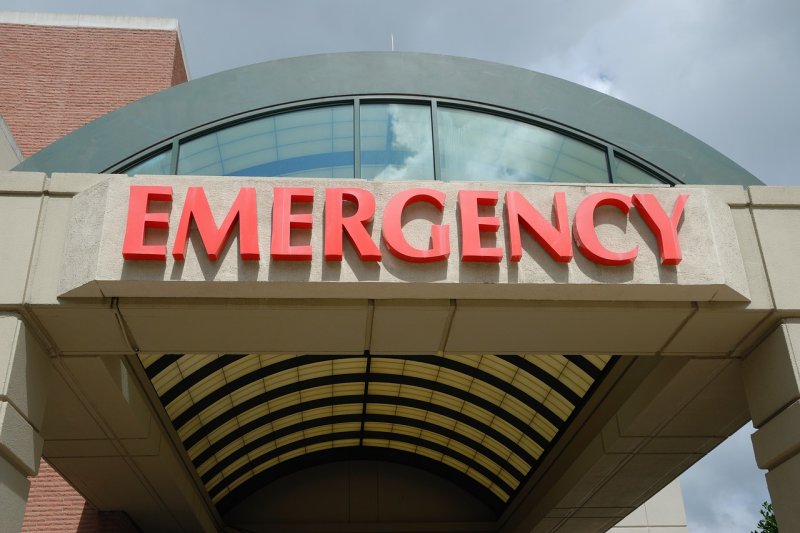Study: Amid closure threats, rural ERs save lives at rates similar to urban hospitals

Despite limited resources, rural hospital emergency rooms provide care similar in quality to their urban counterparts, a new study has found. Photo by paulbr75/Pixabay
Nov. 19 (UPI) -- Patients treated at rural emergency rooms have health outcomes similar to people who receive care at urban facilities, a study published Friday by JAMA Network Open found.
This is despite many of these hospitals being underfunded and operating under the threat of closure, the researchers said.
Although rural hospitals see far fewer patients than their urban counterparts, those covered by Medicare and treated in ERs in either type of region had about a 4% risk for death after suffering an emergency health condition, such as a heart attack or stroke, the data showed.
However, about 6% of patients treated in rural ERs were transferred to other hospitals, compared to 2% of those who initially receive care in urban facilities, according to the researchers.
"Our results should be reassuring to rural communities, rural clinicians and rural health policymakers [because], as a whole, it appears rural emergency departments function well in the care of patients," study co-author Dr. Margaret Greenwood-Ericksen told UPI in an email.
"We initially expected to see a more significant difference in mortality, [but] the findings indicate that [emergency departments] are doing well for the patients they serve," said Greenwood-Ericksen, an assistant professor of emergency medicine at the University of New Mexico in Albuquerque.
An analysis published in 2020 by the journal Health Affairs found that death rates are higher in rural regions of the United States than in more urban areas due at least partially to limited access to quality healthcare in less populated parts of the country.
RELATED Most in rural areas 'comfortable' with telehealth during pandemic, study finds
With primary care and specialty clinics often a farther away, hospitals and emergency rooms "are ... critical points of access for care for rural communities," according to Greenwood-Ericksen.
However, rural facilities "are frequently not resourced like peer institutions in metropolitan areas," she said.
Since 2010, more than 100 rural hospitals in the United States have closed, and nearly 200 have been shuttered since 2005, a report from the Sheps Center for Health Services Research at the University of North Carolina-Chapel Hill found.
RELATED Study: Death rates from chronic conditions, 'deaths of despair' rising in rural U.S.
In 2020 alone, during the height of the COVID-19 pandemic, nearly 20 rural hospitals closed or stopped providing inpatient care, according to the Sheps center.
As a result, millions of people in the United States have or are at risk losing valuable healthcare access within their home communities -- care that can save lives, Greenwood-Ericksen said.
For this study, Greenwood-Ericksen and her colleagues analyzed more than 470,000 patient outcomes from Medicare beneficiaries treated at rural and urban emergency rooms between 2011 and 2015.
Although mortality rates were similar for patients with life-threatening illnesses, such as heart attack or stroke, treated at rural and urbans ERs, rates were higher at rural ERs for conditions more related to symptoms such as chest pain and vomiting.
Patients treated at rural ERs for chest pain, for example, were 54% more likely to die within 30 days than those cared for at urban facilities.
Similarly, those who arrived at a rural ER with nausea and vomiting or abdominal pain were about 70% more likely to die within 30 days than those treated at urban hospitals
In addition, about 25% of patients treated in rural ERs were eventually admitted to the hospital compared with nearly 40% of patients at urban ERs, the researchers said.
The similarities in patient outcomes between rural and urban ERs highlight the importance of access to critical care for treating life-threatening conditions, particularly as many of these facilities are at risk losing funding and resources, according to the researchers.
"As [these facilities] provide lifesaving services to their communities, their closure may result in a rise in rural patient mortality," Greenwood-Ericksen said.
No comments:
Post a Comment